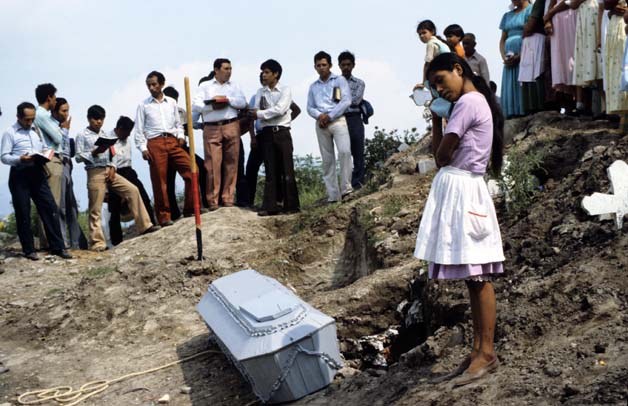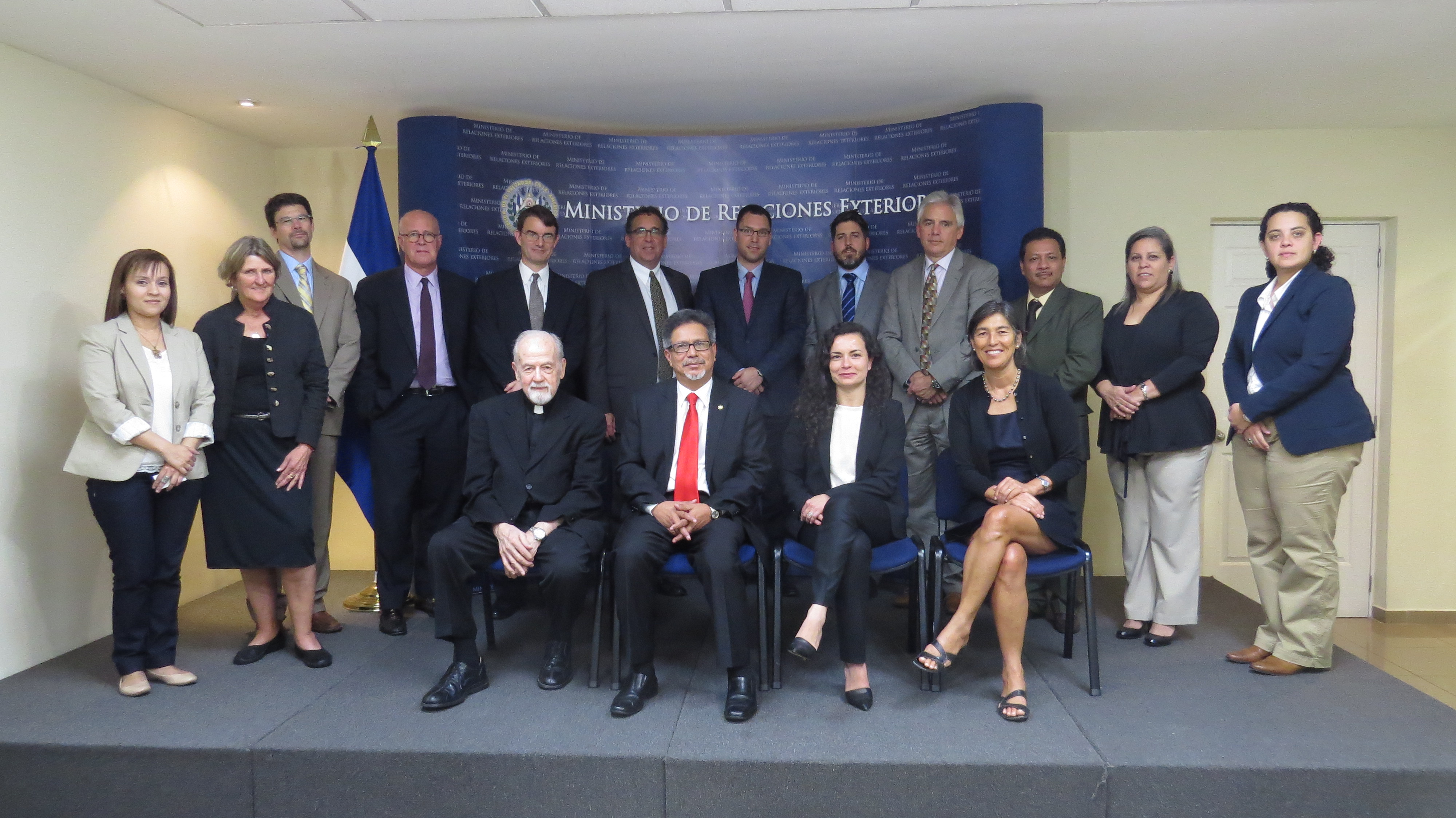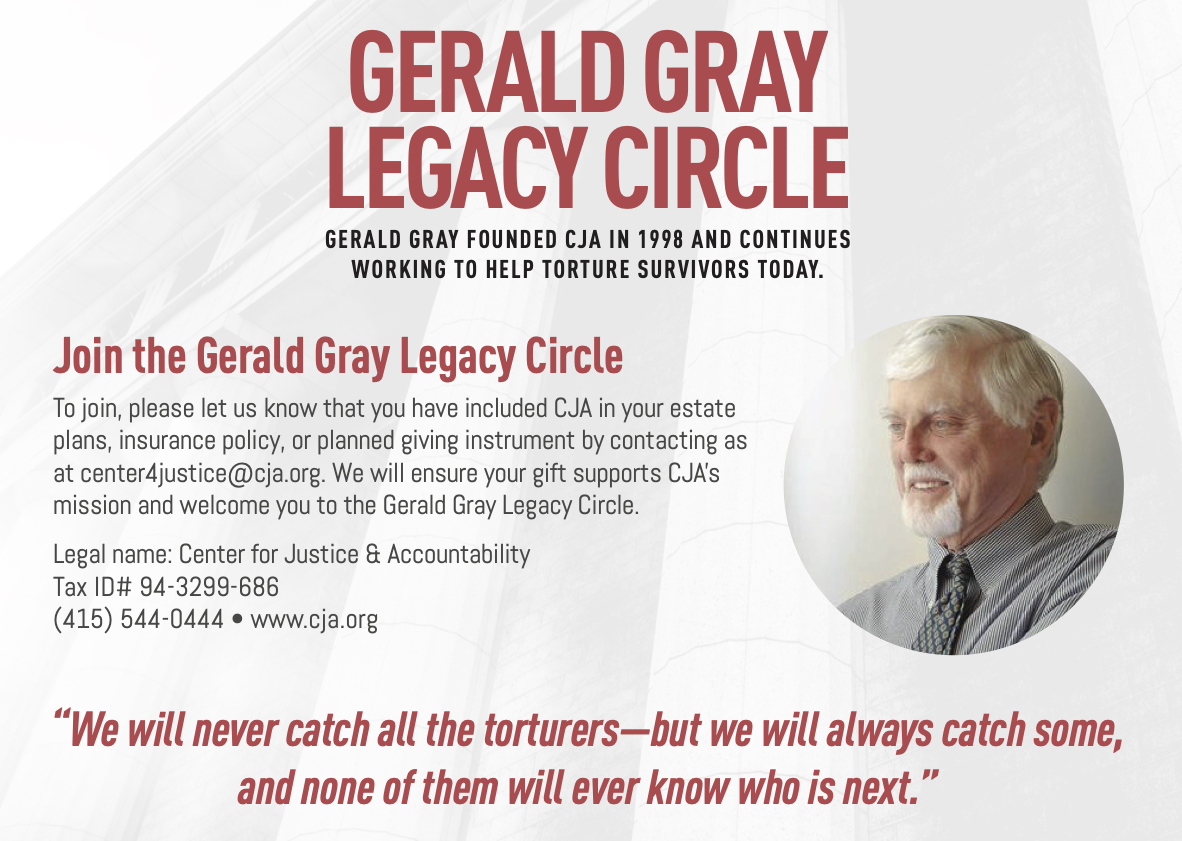

Over 75,000 civilians died at the hands of government forces during the civil war in El Salvador (1980-1992). These 12 years of violence were punctuated by three well-known atrocities: the 1980 assassination of Archbishop Oscar Romero that sparked the conflict, the rape and murder of four American churchwomen that caused international outrage, and the 1989 Jesuits Massacre that finally compelled the international community to intervene.
Roots of the Conflict
Since the Spanish conquest in the 16th century, a single resource has dominated El Salvador: land. Like its Central American neighbors, El Salvador was organized into a giant plantation for luxury commodities: cocoa, indigo and, in the 1800s, coffee. Independence only shifted control from the Spanish to Salvadorans of European ancestry. Indigenous peoples and mestizos, comprising 95% percent of the population, were reduced to virtual serfdom, while a small minority of landholders called the “Fourteen Families” ruled through a long series of military dictatorships. It is along these fault lines–between peasant and planter, European and native –that cycles of violence have erupted throughout El Salvador’s troubled history. [1]
Prelude to a War: 1932-1980
“To be Salvadoran,” wrote historian Héctor Lindo-Fuentes, “means knowing that something tremendous happened in late January 1932.” [2] In the western part of the country, labor leader Agustin Farabundo Marti led a peasant revolt against the ruling dictatorship and the Fourteen Families. Within a few weeks, the revolt was crushed in a massive military reprisal called la matanza: the slaughter. An estimated 30,000 civilians were massacred, the majority of whom were indigenous people whose traditional dress and languages marked them for death. The Salvadoran military would dominate the government for decades to come. [2]
In a sense, the conflict between left and right wings never ended. Throughout the 1960s and 1970s, left-wing guerrillas and right-wing paramilitary death squads engaged in a deadly spiral of political violence. On October 15, 1979, a group of moderate officers ousted the dictator Carlos Humberto Romero and formed the Revolutionary Government Junta (JRG). In January 1980, right-wing violence broke out against the JRG, including bombings against government newspapers, kidnappings and murder. All of the JRG’s civilian leaders resigned. At the same time, the U.S. State Department received warnings that right-wing death squads were allying with the military against the government. [1]
The JRG’s main opponent on the right was a Salvadoran army officer named Roberto D’Aubuisson—also known under the sinister nickname “Blowtorch Bob.” D’Aubuisson was the mastermind behind an attempted coup against the JRG and the 1980 assassination of the renowned human rights defender Archbishop Oscar Romero.
Although D’Aubuisson was arrested along with other senior officers responsible for Romero’s murder, a wave of right-wing terrorist attacks compelled the government to release him. He went on to found the right-wing Nationalist Republican Alliance party (ARENA) in September 1980, and remained a key leader of the right-wing death squads throughout the war.
Civil War: 1980-1992
The assassination of Archbishop Romero tipped the sporadic political violence of the 1970s into full-scale civil war. When 250,000 mourners gathered for his funeral, snipers attacked the crowd, killing 42 and wounding over 200. A BBC reporter captured the terror: “Tens of thousands of mourners who had gathered for Romero’s funeral Mass in front of the cathedral in San Salvador were filmed fleeing in terror as army gunners on the rooftops around the square opened fire…One person who was there told us he remembered the piles of shoes left behind by those who escaped with their lives.” [3]
%media%
In September 1980, the five major leftist revolutionary organizations merged to form the Farabundo Martí National Liberation Front (FMLN). The FMLN fielded a guerilla army to oppose government and right-wing paramilitary forces.
A few months later, in December 1980, four American churchwomen were raped and murdered by military and paramilitary forces. U.S. President Jimmy Carter responded by temporarily cutting off aid to El Salvador. But U.S. policy took a dramatic shift with the election of President Ronald Reagan in 1980. Asserting a hemispheric-wide national security strategy, the Reagan administration considered the Salvadoran government–its atrocities notwithstanding–a friend in the Cold War. [4]
When the FMLN launched an all-out attack on the government on January 10, 1981, the United States came to the Salvadoran government’s assistance and provided them with substantial military aid and advisors. Much of this aid went to the formation of the Rapid Deployment Infantry Battalions, the same groups identified by the UN Truth Commission as “the primary agents of war crimes.” Still, U.S. policy towards El Salvador was not monolithic; many U.S. officials denounced the atrocities committed in the counter-insurgency. Former ambassador Robert White, who was posted in El Salvador in 1980-1981 until his recall by Reagan, was an outspoken critic of the Salvadoran government and paramilitaries. He referred to D’Aubuisson as a “pathological killer.” [5]
Throughout the 1980s, the war between government, guerilla and paramilitary forces continued to produce systematic human rights violations, subjecting civilians to torture, mutilation, forced disappearance, extrajudicial killing and mass rape. Some 75,000 Salvadorans were killed by massacres, summary executions, landmines and indiscriminate bombing. [6]
Despite the election of the centrist José Napoleón Duarte in May 1984–El Salvador’s first elected civilian leader in 50 years–negotiations between the FMLN and the government remain stalled. In 1989, Duarte was replaced by Alfredo Cristiani of the right-wing ARENA party, under whom the conflict underwent a major escalation.
But on November 16 1989, a gratuitous act of violence finally shocked the world’s conscience. The Atlacatl Brigade, a rapid deployment counterinsurgency unit, entered the campus of the University of Central America and dragged six prominent Jesuit priests, their housekeeper and her daughter from their beds and murdered them. The Atlacatl Brigade had perpetrated an arc of atrocities beginning with the infamous El Mozote Massacre in 1981. [7]
The Moakley Report and the United Nations Truth Commission: 1989-1993
The Jesuits Massacre persuaded the U.S. Congress to create a special investigative task force in 1989, led by Congressman Joseph Moakley. The findings of Moakley’s Task Force revealed that the upper echelon of the Salvadoran officer corps had been responsible for the murders of the Jesuits, and that 19 of the 26 Salvadoran officers responsible had received military training at the U.S. Army School of the Americas (SOA). The report set in motion an international process to end the conflict. [8]
The FMLN’s final offensive in late 1989 demonstrated that the conflict was at a stalemate; neither side seemed capable of attaining a strategic advantage. At the same time, world events were stripping away the foreign support that had sustained both warring parties. The collapse of the Eastern Bloc and the Soviet Union signaled the loss of crucial allies for the FMLN. At the same time, the end of the Cold War shifted U.S. policy in the region: there was no longer a compelling interest for the U.S. to support the unsavory Salvadoran counterinsurgency. This reality, combined with the aftershock of the Jesuits murders, pushed the U.S. to press for a peace settlement.
On January 16, 1992, the signing of the United Nations-brokered Chapultepec Peace Accords in Mexico City ended 20 months of negotiations. As part of the settlement, the Salvadoran government and the FMLN agreed to the establishment of a U.N.-appointed Truth Commission to investigate the abuses committed during the war. The Truth Commission’s report attributed the overwhelming majority of the human rights abuses to the Salvadoran armed forces and the paramilitaries.
“In examining the staggering breadth of the violence that occurred in El Salvador, the Commission was moved by the senselessness of the killings, the brutality with which they were committed, the terror that they created in the people, in other words the madness, or locura, of the war.”
-Reinaldo Figueredo, U.N. Truth Commission [9]
An Enduring Problem of Impunity: 1993-2009
On March 20, 1993, five days after the U.N. Truth Commission report was released, the Salvadoran Legislative Assembly, dominated by the ARENA party, adopted a blanket amnesty law that shielded all military and guerilla forces from prosecution for human rights abuses committed during the war. Later, in a 1999 report concerning El Salvador’s failure to prosecute those responsible for the 1989 Jesuits Massacre, the Inter-American Commission on Human Rights declared the amnesty law a violation of international law. [10]
This lack of accountability persists today. The right-wing ARENA party continued to govern from 1989 to early 2009. During this time, the FMLN was demobilized and transformed itself into the party of opposition. But in a profound way, both sides have practiced electoral politics as a continuation of war by other means. To this day, the ARENA party anthem still vows that the nation will be “the tomb where the Reds meet their end.” [11]
In 2009, FMLN won the presidential elections. Former journalist Mauricio Funes now serves as the president. While this is a hopeful sign for the normalization of the political process, the Amnesty Law still stands, so the human rights violations of the civil war have not yet been fully addressed.
CJA’s criminal cases against high-ranking Salvadoran officials in Spain and our civil litigation in the U.S. have emerged as a central component of this struggle.
Notes
[1] El Salvador: A Country Study, Ed. by Richard A. Haggarty, Federal Research Division, Library of Congress, November 1988. available at: http://memory.loc.gov/frd/cs/svtoc.html Accessed: August 16, 2009.
[2] Héctor Lindo-Fuentes, Remembering a Massacre in El Salvador: The Insurrection of 1932, Roque Dalton and the Politics of Historical Memory, Albuquerque: University of New Mexico Press, 2007, 253.
[3] “Requiem for Romero”, Maurice Walsh, BBC News, March 24th, 2005. Available at: http://www.soaw.org/newswire_detail.php?id=777 Accessed: August 16, 2009.
[4] El Salvador: War, Peace, and Human Rights, 1980-1994, Special Collection, The National Security Archive, December 1996. Available at: http://www.gwu.edu/~nsarchiv/nsa/publications/elsalvador2/index.html Accessed: August 16, 2009.
[5] “Roberto D’Aubuisson, 48, Far-Rightist in El Salvador” (obit.)
Richard Severo, New York Times, February 21, 1992. Available at: http://www.nytimes.com/1992/02/21/world/roberto-d-aubuisson-48-far-rightist-in-salvador.html Accessed: August 16, 2009.
[6] From Madness to Hope: The 12-year war in El Salvador, Report of the U.N. Truth Commission on El Salvador, 1 April 1993
http://www.derechos.org/nizkor/salvador/informes/truth.html Accessed: August 16, 2009.
[7] “The Truth of El Mozote”, Mark Danner, Institute of International Studies, U.C. Berkeley, December 6, 1993. Available at: http://globetrotter.berkeley.edu/people/Danner/1993/truthelmoz01.html Accessed: August 16, 2009.
[8] “Statement of Representative Joe Moakley Chairman of the Speaker’s Task Force on El Salvador”, November 18, 1991.
[9] “The peace process in El Salvador: hearing before the Subcommittee on Western Hemisphere Affairs of the Committee on Foreign Affairs, House of Representatives, One Hundred Third Congress, first session, March 16 and 23, 1993,” Available at: http://www.archive.org/stream/peaceprocessinel00unit/peaceprocessinel00unit_djvu.txt Accessed: August 16, 2009.
[10] Inter-American Commission on Human Rights, Report Nº 136/99, Case 10.488 Ignacio Ellacuria, S.J.; Segundo Montes , S.J.; Armando Lopez, S.J.; Ignacio Martin-Baro, S.J.; Joaquin Lopez y Lopez, S.J.; Juan Ramon Moreno, S.J.; Julia Elba Ramos; and Celina Mariceth Ramos, El Salvador, December 22, 1999. Available at: http://www.cidh.org/annualrep/99eng/Merits/ElSalvador10.488.htm Accessed: August 16, 2009.
[11] “Elections in El Salvador Invoke Rivalries of Civil War Years” Elisabeth Malkin, New York Times, March 11, 2009. Available at: http://www.nytimes.com/2009/03/12/world/americas/12salvador.html Accessed: August 16, 2009.
